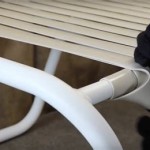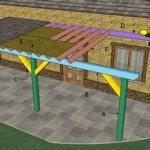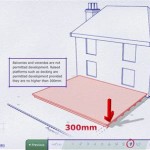How To Clean Moss From Patio Pavers
Moss, while visually appealing in some settings, can create a slippery and unsightly surface on patio pavers. Its presence indicates a damp, shaded environment conducive to growth. Removing moss not only enhances the aesthetic appeal of the patio but also improves safety by reducing the risk of slips and falls. Regular cleaning and maintenance can prevent moss from becoming deeply embedded, making the task easier and less time-consuming.
Choosing the Right Cleaning Method
Several effective methods exist for cleaning moss from patio pavers. Selecting the best approach depends on factors such as the severity of moss growth, the type of pavers, and environmental considerations. Gentle methods, like using a stiff brush and water, are suitable for light moss coverage. For more stubborn moss, more aggressive techniques like power washing or chemical treatments may be necessary. Understanding the pros and cons of each method allows for informed decision-making and optimal results.
Manual Moss Removal Techniques
Manual removal methods offer an environmentally friendly way to address moss growth, particularly when dealing with smaller areas or less established moss. A stiff-bristled brush, such as a push broom or deck brush, can effectively dislodge moss from the paver surface. Rinsing the area with water afterward helps to remove any remaining debris. While labor-intensive, manual removal avoids the potential environmental impact of chemical cleaners and the potential damage high-pressure washing can inflict on some paver types.
For more entrenched moss, a scraper can be helpful. A putty knife or a specialized paving scraper can lift moss from between pavers and crevices. Care should be taken to avoid scratching the paver surface, particularly with softer materials. Following manual scraping with brushing and rinsing ensures thorough cleaning.
Power Washing for Moss Removal
Power washing offers a fast and effective way to remove moss, especially from large areas or heavily infested surfaces. The high-pressure water stream blasts away moss and other debris, leaving the pavers clean. However, power washing requires specialized equipment and carries the potential to damage certain types of pavers. The force of the water can erode or dislodge softer materials, and the high pressure can etch some surfaces.
When using a power washer, it's crucial to select the appropriate nozzle and pressure setting. Starting with a lower pressure and gradually increasing it as needed prevents unnecessary damage. Maintaining a consistent distance between the nozzle and the paver surface also helps to avoid uneven cleaning or surface damage. Protecting surrounding plants and structures from overspray is another essential precaution.
Chemical Treatments for Stubborn Moss
Chemical treatments provide a powerful solution for stubborn moss growth that resists other cleaning methods. Various moss killers are commercially available, typically containing ingredients like potassium salts of fatty acids, ferrous sulfate, or bleach. These chemicals effectively kill the moss, making it easier to remove with brushing or rinsing. However, chemical treatments present potential environmental risks, and it's crucial to follow product instructions carefully.
Before applying any chemical treatment, it's important to protect surrounding plants and vegetation. The chemicals can harm non-target organisms, so covering or temporarily removing sensitive plants is recommended. Wearing appropriate protective gear, such as gloves and eye protection, safeguards the user during application. Rinsing the area thoroughly after treatment minimizes environmental impact and prevents residue from remaining on the paved surface.
Preventing Moss Regrowth
After cleaning, preventing future moss growth is essential for maintaining a clean and safe patio. Improving drainage helps to reduce moisture buildup, a key factor in moss growth. Trimming overhanging vegetation increases sunlight and air circulation, further discouraging moss development. Regular sweeping or brushing removes debris and prevents moss from gaining a foothold. Applying a moss-inhibiting sealant can also provide long-term protection.
Periodically inspecting the patio for signs of moss allows for early intervention. Addressing moss growth in its early stages prevents it from becoming established and requiring more aggressive cleaning methods. By incorporating preventive measures into regular patio maintenance, the effort required for cleaning is minimized, and the patio remains attractive and safe throughout the year.

How To Clean Your Patio And Kill Moss Red

Get Rid Of Patio Moss The Paver Savers Northampton Pa

How To Clean Pavers Remove Moss Weeds Kill Algae Control Pests Oil From Any Hardscape

How To Remove Moss From Pavers A Handy Guide

Remove Algae And Lichen Off Patio Pavers Like Rick Wet Forget Blog
How To Clean Moss Off Patios Driveways Paths

When S The Best Time To Remove Moss From Pavers You May Be Surprised Roof Floor

How To Kill And Prevent Sidewalk Patio Moss

Best Tips On Cleaning Patio Slabs How To Get Rid Of Algae

How To Get Rid Of Moss From Pavers Dm Outdoor Living Spaces
See Also








